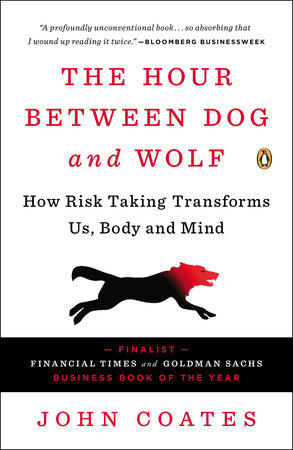Volatile markets can make you sick – literally: John Coates on viruses and volatility
Published on the 10th April 2020 in the Financial Times newspaper, this wasn’t the first time Mr Coates had contributed an article. Acting on a hunch he had had when running a trading desk for Deutsche Bank, he then retrained in neuroscience and physiology at Cambridge University. He wanted to find out whether ‘the rollercoaster of physical sensations a person experiences while immersed in the markets alters their risk-taking’.
Research he and colleagues have done over the last 12 years attempted to see why financial and medical crises seemed to go hand in hand. But rather than focus on the effects of unemployment, straightened circumstances and worry, he focused on the effects of uncertainty itself. Tracking the traders in dealing rooms, he measured changes in cardiovascular, endocrine and immune systems – only to find that surprisingly their bodies were highly sensitive to market volatility.
He believes this is because our bodies are primarily designed to detect movement, our brains processing incoming data with the aim of working out what movement might ensue: i.e. what might be the best course of action. Here I would agree with him as I am acutely aware of sudden, unexpected movements, a mouse scurrying across the floor or a robin darting about on the lawn, and only later recognise what I’d seen.
What’s known as ‘’the stress response’’ is in fact preparation for movement, marshalling cortisol, glucose and free fatty acids to fuel our cells. Ideally short-lived, though in times of crisis it might carry on for for months, he found that levels mirrored bond price moves tick for tick – regardless of whether these were profitable or otherwise.
Hopefully you’ll be able to read the article in full via this link.
John Coates has written a book readers might also find interesting. ‘The Hour Between Dog and Wolf: How Risk Taking Transforms Us, Body and Mind’, published by Penguin Random House in 2012. The expression refers to the Jekyll-and-Hyde transformation traders go through when under pressure.

Tags: Information, risk appetite, Stress, Technical Analysis Courses, volatility
The views and opinions expressed on the STA’s blog do not necessarily represent those of the Society of Technical Analysts (the “STA”), or of any officer, director or member of the STA. The STA makes no representations as to the accuracy, completeness, or reliability of any information on the blog or found by following any link on blog, and none of the STA, STA Administrative Services or any current or past executive board members are liable for any errors, omissions, or delays in this information or any losses, injuries, or damages arising from its display or use. None of the information on the STA’s blog constitutes investment advice.
Latest Posts
- Navigating the Market: Insights from Robin Griffiths and Ron William April 9, 2025
- Avoid Revenge Trading: The Key to Long-Term Trading Success March 31, 2025
- Mastering Relative Strength Portfolios: Key Takeaways from the March STA Meeting March 12, 2025
- Stay Disciplined, Stay Profitable February 26, 2025
- Understanding Price Gaps in Trending February 19, 2025




















Latest Comments